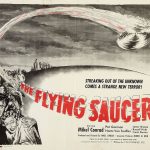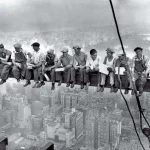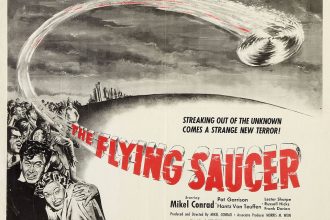In the ever-evolving landscape of Walt Disney World’s Magic Kingdom, attractions come and go, each leaving behind a legacy cherished by fans and historians alike. One such attraction, often remembered fondly by 1980s and early 1990s visitors, was Delta Dreamflight. This gentle omnimover ride, located in Tomorrowland, offered guests a serene and imaginative journey through the skies of the world. Though it operated for just over a decade, Delta Dreamflight carved a unique niche in Disney theme park history as a successor to a beloved predecessor and a bridge to modern flight simulation experiences.
Originally opening in 1989 as “If You Had Wings,” the attraction was a collaborative effort between Walt Disney Imagineering and Eastern Airlines. Designed as a tribute to air travel, the ride took guests on a whimsical flight across iconic global destinations, all set to the now-iconic jingle, “If You Had Wings.” The attraction’s catchy theme song, cheerful narration, and colorful animatronic scenes made it an instant favorite among families and aviation enthusiasts. However, by the late 1980s, Eastern Airlines faced financial difficulties and ultimately withdrew its sponsorship, leaving the future of the ride uncertain.
Enter Delta Air Lines. In 1989, Delta stepped in as the new sponsor, marking a pivotal shift in the attraction’s identity. The rebranded experience, now known as Delta Dreamflight, opened in December of that year. While the core ride system and track layout remained largely unchanged, the narrative and visual elements were updated to reflect Delta’s branding and modern aviation themes. The transition was more than just a name change—it represented a new era in corporate partnerships within Disney parks and signaled a move toward more immersive storytelling in sponsored attractions.
Press Kit Scans (1989)
Among the most valuable artifacts from the Delta Dreamflight era are the original press kits distributed by Walt Disney World in 1989. These kits, designed for media outlets and travel journalists, included detailed fact sheets, high-resolution photographs, and background information on the attraction’s development and sponsorship. The press materials emphasized Delta’s commitment to innovation and customer experience, aligning the airline’s brand with the magic of Disney storytelling.
One notable page from the press kit highlights the ride’s technical specifications: a continuous-moving omnimover system with 120 vehicles, each accommodating two to three guests. The total ride duration was approximately six minutes, during which guests experienced a simulated flight through seven distinct environments, including tropical islands, mountain ranges, and bustling cityscapes. The narration, now delivered by a warm, professional voice rather than the original whimsical tone, focused on the joy of travel and the wonders of the modern world.
The press kit also included quotes from Disney executives and Delta representatives, underscoring the significance of the partnership. “Delta Dreamflight represents the perfect fusion of imagination and innovation,” stated one Imagineer. “It’s not just a ride—it’s an invitation to explore the world without ever leaving your seat.” These materials are now highly sought after by collectors and Disney historians, offering a rare glimpse into the marketing and public relations strategies of the time.
Ride-Through Summary & B-Roll Storyboard
The Delta Dreamflight experience began with a pre-show area themed as an airport departure lounge. Guests entered through a sleek, retro-futuristic terminal adorned with departure boards, luggage carts, and subtle Delta branding. A brief safety announcement, delivered in a calm, reassuring tone, set the stage for the journey ahead. Once aboard the slow-moving ride vehicle—resembling a futuristic jet pod—guests were gently lifted into the main show building.
The first scene depicted a sunrise over a quiet suburban neighborhood, with children waving from their front yards as a small plane took off in the distance. This nostalgic opening was followed by a transition into a vibrant Caribbean sequence, complete with animated parrots, swaying palm trees, and turquoise waters. The use of forced perspective and painted backdrops created a convincing illusion of flight, enhanced by subtle motion effects and synchronized sound design.
Next, the vehicle glided over a snow-capped mountain range, where a team of climbers scaled a peak amid swirling snowflakes. The temperature in the ride zone subtly dropped, and wind effects added to the realism. This was followed by a desert sequence featuring a mirage of an oasis and a vintage biplane flying overhead. The attention to environmental detail was remarkable, with heat ripple effects and sand-colored lighting contributing to the atmosphere.
The urban segment showcased a futuristic city skyline at dusk, with hovercrafts and flying taxis navigating between skyscrapers. This scene, heavily influenced by the retro-futurism of the 1950s and 60s, paid homage to classic Tomorrowland aesthetics while incorporating modern touches. A brief interlude featured a child’s dream of flying, with paper airplanes and kites dancing in the wind—symbolizing the universal desire for freedom and adventure.
The final scene was the most ambitious: a global tour presented through a series of rapid, cinematic vignettes. Guests “flew” over the Great Wall of China, the pyramids of Egypt, the Swiss Alps, and the Amazon rainforest, all within the span of 90 seconds. This sequence utilized rapid scene changes, dynamic lighting, and surround sound to simulate the sensation of high-speed travel. The ride concluded with a gentle descent into a hangar, where the narrator welcomed guests back to the terminal with the words, “Welcome home, travelers.”
Behind the scenes, the b-roll storyboard used for promotional videos and internal training featured annotated sketches of each scene, along with timing cues and audio notes. These storyboards revealed the meticulous planning that went into every second of the ride, from the placement of animatronic figures to the synchronization of music and motion. The b-roll footage, now preserved in Disney archives, showcases the ride in its prime, with vibrant colors and smooth transitions that captivated audiences for years.
Sponsor Swap Timeline: Eastern → Delta
The transition from Eastern Airlines to Delta Air Lines as the sponsor of the attraction was a significant event in Disney park history. The timeline of this change reflects broader shifts in the airline industry and corporate sponsorship models. Eastern Airlines, once a major player in U.S. aviation, began experiencing financial instability in the mid-1980s. By 1987, the company had ceased operations at several key hubs, and by 1989, it was clear that their sponsorship of the Magic Kingdom attraction could not continue.
Disney, eager to maintain a strong aviation-themed presence in Tomorrowland, began negotiations with other carriers. Delta Air Lines, which had been expanding its route network and investing in customer experience, saw an opportunity to align its brand with the family-friendly, forward-thinking image of Disney. The partnership was officially announced in June 1989, with a commitment to a 10-year sponsorship agreement.
- June 1989: Delta Air Lines signs sponsorship agreement with Walt Disney World.
- August 1989: “If You Had Wings” closes for renovation and rebranding.
- October 1989: Construction begins on updated show scenes and new signage.
- December 15, 1989: Delta Dreamflight officially opens to the public.
- 1990–1996: Delta runs promotional campaigns linking park visits to air travel rewards.
- 1996: Sponsorship ends; attraction is rethemed as “Take Flight” before closing permanently.
The rebranding process involved more than just changing logos. Imagineers redesigned the queue area, replacing Eastern’s coral and teal color scheme with Delta’s navy and white palette. The soundtrack was updated to feature a more contemporary orchestral score, though the original “If You Had Wings” melody was subtly woven into the new composition as a nostalgic nod. Voiceovers were re-recorded with a new narrator, and interactive kiosks were added to provide guests with information about Delta’s destinations.
The sponsorship swap also had marketing implications. Delta launched a co-branded campaign offering special airfare discounts to guests who visited the attraction, while Disney promoted Delta as the “official airline of Walt Disney World.” This cross-promotional strategy was one of the earliest examples of deep integration between a theme park and a corporate sponsor, setting a precedent for future partnerships with companies like Coca-Cola, General Electric, and Toyota.
3-D Printable Dreamflight Logo Pin File
In a nod to modern fan engagement, a 3-D printable model of the Delta Dreamflight logo pin has recently been released by a group of Disney enthusiasts and digital archivists. The file, available under a non-commercial license, allows fans to recreate the iconic souvenir at home using standard FDM or resin 3-D printers. The pin design features the original Dreamflight wordmark in sleek silver, encircled by a stylized airplane trail that forms a perfect loop—symbolizing the continuous journey of flight.
The STL file is optimized for printing at 1.5 inches in diameter, with a flat back suitable for attaching a butterfly clutch or magnet. Detailed instructions include recommended layer height (0.1mm for FDM, 0.05mm for resin), support structures, and post-processing tips such as sanding and metallic painting. The release of this file has sparked renewed interest in the attraction, with online communities sharing photos of their printed pins and organizing virtual meetups.
This initiative highlights the growing trend of digital preservation in theme park fandom. As original merchandise becomes increasingly rare and expensive, 3-D printing offers a sustainable and accessible alternative for collectors. The Dreamflight pin project also underscores the emotional connection fans maintain with discontinued attractions, proving that even rides closed for decades can continue to inspire creativity and community.
It’s worth noting that while the file is fan-made and not officially licensed by Disney or Delta, it adheres to fair use principles by focusing on historical preservation rather than commercial gain. The creators have emphasized their respect for intellectual property and encourage users to credit the original designers and share their prints within the fan community.
Memories Thread: Did You Ride It?
Ask any longtime Disney fan about Delta Dreamflight, and you’re likely to hear a wave of nostalgia. Online forums, social media groups, and fan sites are filled with personal recollections of the ride, often shared in dedicated “memories threads” where users recount their experiences in vivid detail. These stories serve as an informal oral history, preserving the emotional impact of the attraction beyond official records.
“I rode Delta Dreamflight with my dad in 1991. I was seven years old, and I remember feeling like I was really flying. The mountain scene scared me a little, but the city lights at the end made me feel safe. I still hum the music sometimes.”
Another user shared: “My grandparents took me on it during our first trip to Disney World. They said it reminded them of ‘If You Had Wings,’ which they’d ridden in the 70s. It was cool to hear how the ride had changed but still kept that sense of wonder.”
These personal accounts reveal the ride’s lasting impact. Many fans describe it as a calming, almost meditative experience—especially compared to today’s high-speed thrill rides. Parents appreciated its accessibility for young children, while aviation buffs admired the attention to detail in the scenery and sound design. The absence of loud noises or sudden drops made it a favorite for guests seeking a peaceful break from the park’s more intense attractions.
Some memories focus on the small details: the texture of the seats, the smell of the rubber flooring, or the way the light changed as the vehicle moved from scene to scene. Others recall trying to spot hidden Mickeys in the landscapes or listening for the faint echo of the original “If You Had Wings” melody in the new score. These shared experiences have helped keep Delta Dreamflight alive in the collective imagination of Disney fans.
As newer generations discover these stories, the legacy of Delta Dreamflight continues to grow. Whether through press kit scans, ride-through analyses, or 3-D printed memorabilia, the spirit of the attraction endures. It stands as a testament to a time when air travel was seen as magical, and theme parks served as gateways to distant lands—all without leaving the comfort of a moving ride vehicle.








